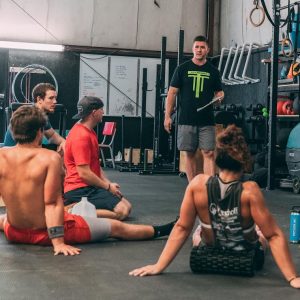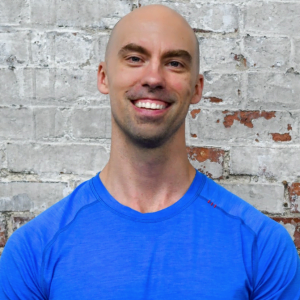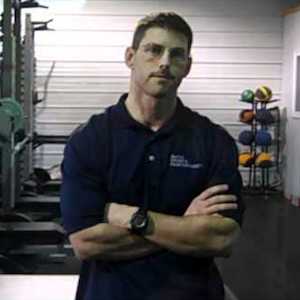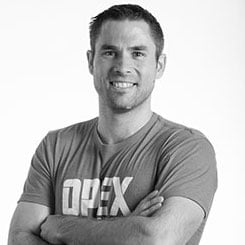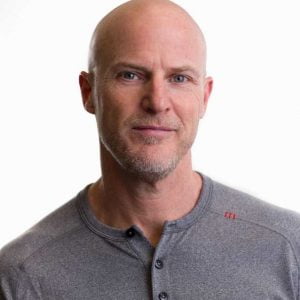Anyone who has coached or competed in CrossFit for awhile sees things that kind of don’t make sense.
Athletes with 15+ unbroken ring muscle-ups and a 6:30 2k row who are surprisingly bad at “metcons.”
Athletes who can only do 5-10 unbroken strict handstand push-ups who are able to quickly chip away at a set of 50 and beat athletes who can do 20+ unbroken reps.
Evan Peikon from Training Think Tank has done a lot of work with the Moxy unit on measuring muscle oxygen saturation and blood flow, and he’s developed a model that is able to explain a lot of these seemingly confusing contradictions in performance.
In this podcast, we break down Evan’s model for fatigue in mixed modal athletes, and we also give some practical training tips so that athletes can improve their conditioning or their strength based upon their individual limitation.
Individualization in a program isn’t just about understanding what an athlete’s strengths and weaknesses are, but understanding what each individual’s specific limiting factors are and focusing training on improving those weak links.
Check out the full conversation below to learn:
- The 3 different types of limitations in CrossFit athletes – and how each of these types of athletes should think about training to improve their capacity or get stronger
- How Evan currently thinks about fatigue – and what is outdated about the way that most people are thinking about getting tired in a metcon
- When “mental toughness” plays a role in performance – and when athletes are hitting hard physiological limiters that they can’t push through
Check out the episode at the links below. If you enjoyed the episode, the best way to support the show is to share with your friends, so send them a link.
Listen Here
- iTunes
- Overcast
- Google Play
- mp3
- Or stream here:
- If you’re enjoying the show, why not a leave a review? It makes a difference in terms of other people finding the show.
Check out more from Evan and Training Think Tank here:
- Instagram: @evan_peikon | @trainingthinktank
- Website: Evan’s Interviews and Articles | www.trainingthinktank.com
- YouTube: @trainingthinktank
Show Notes:
- [01:10] Evan’s opinions on metalcore
- [10:55] The basic physiology of oxygen delivery and what different measures like VO2 max, muscle oxygen saturation and heart rate can tell us about performance
- [16:58] What are different types of fatigue that can occur at the muscle level? And – the 3 different types of limiters in CrossFit athletes.
- [23:35] What is the difference between Evan’s model of fatigue based upon his work with muscle oxygen saturation and more traditional models of fatigue based upon acidosis?
- [31:45] What is happening when athletes feel “burning” in the muscle vs when athletes feel a “pump” in the muscle? How do these sensations in the muscle create global feelings of fatigue? What role does the “mind” play in governing our effort?
- [41:44] Psychological gamesmanship in racing – particularly in track athletes
- [45:00] What role do occlusions play in creating fatigue for athletes in CrossFit? And – the 2 different types of occlusion and what those mean for your ability to “push through.”
- [01:03:40] Why do some people always have one specific muscle group “blow up” – like their grip, their shoulders, their low back, their calves, etc.
- [01:09:23] How can athletes who tend to get muscle pumps improve their ability in CrossFit? What would an ideal training session look like for this athlete – and why do some common training protocols potentially make this kind of athlete worse?
- [01:17:25] What does Evan think the most common limiting factor is for athletes who do not tend to occlude in their muscles? These athletes often struggle to build strength – how should they structure their strength training protocols so they can actually get stronger?
Links and Resources Mentioned
- Norma Jean
- Josh Scogin
- Cory Brandan
- Norma Jean – Redeemer
- The Chariot
- CTP
- Underoath
- Slipknot
- Pound Classes
- What is muscle oxygen saturation?
- NIRS(Near-infrared spectroscopy)
- Moxy Monitor
- VO2 max
- The Phosphocreatine System
- Anaerobic glycolysis
- Cellular respiration
- Energy system utilization chart
- Bicarbonate buffer system
- 5-1-5 Step Test
- Improvements in Cycling Time Trial Performance Are Not Sustained Following the Acute Provision of Challenging and Deceptive Feedback
- Max El Hag
- Travis Mayer
- James Jowsey

